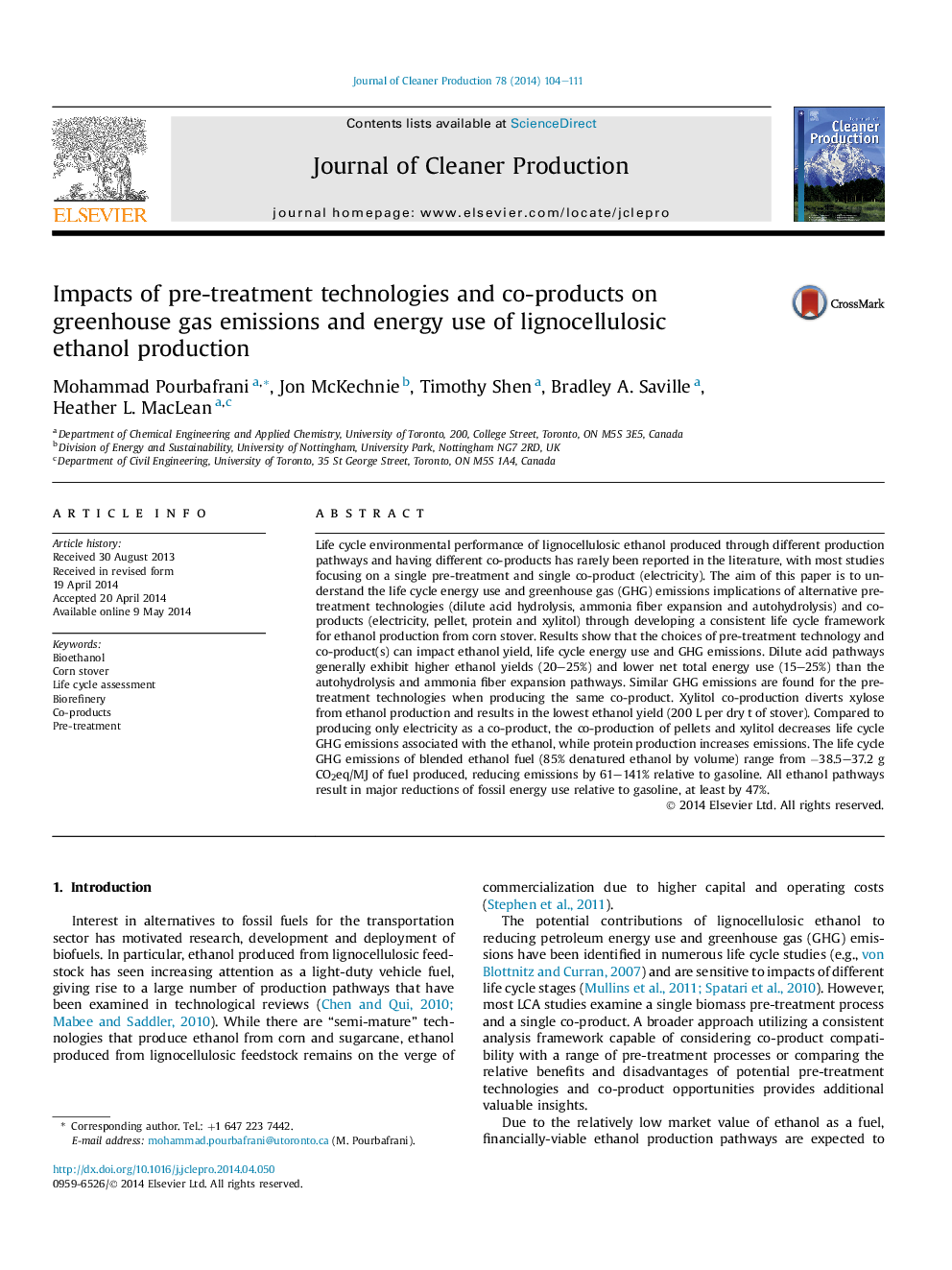| کد مقاله | کد نشریه | سال انتشار | مقاله انگلیسی | نسخه تمام متن |
|---|---|---|---|---|
| 1744877 | 1522168 | 2014 | 8 صفحه PDF | دانلود رایگان |
• Life cycle assessment (LCA) of alternate pre-treatment technologies and co-products.
• The choice of coproduct production has great impact on LCA of cellulosic Bioethanol.
• Cellulosic ethanol pathways meet US legal requirement on GHG reductions.
Life cycle environmental performance of lignocellulosic ethanol produced through different production pathways and having different co-products has rarely been reported in the literature, with most studies focusing on a single pre-treatment and single co-product (electricity). The aim of this paper is to understand the life cycle energy use and greenhouse gas (GHG) emissions implications of alternative pre-treatment technologies (dilute acid hydrolysis, ammonia fiber expansion and autohydrolysis) and co-products (electricity, pellet, protein and xylitol) through developing a consistent life cycle framework for ethanol production from corn stover. Results show that the choices of pre-treatment technology and co-product(s) can impact ethanol yield, life cycle energy use and GHG emissions. Dilute acid pathways generally exhibit higher ethanol yields (20–25%) and lower net total energy use (15–25%) than the autohydrolysis and ammonia fiber expansion pathways. Similar GHG emissions are found for the pre-treatment technologies when producing the same co-product. Xylitol co-production diverts xylose from ethanol production and results in the lowest ethanol yield (200 L per dry t of stover). Compared to producing only electricity as a co-product, the co-production of pellets and xylitol decreases life cycle GHG emissions associated with the ethanol, while protein production increases emissions. The life cycle GHG emissions of blended ethanol fuel (85% denatured ethanol by volume) range from −38.5–37.2 g CO2eq/MJ of fuel produced, reducing emissions by 61–141% relative to gasoline. All ethanol pathways result in major reductions of fossil energy use relative to gasoline, at least by 47%.
Journal: Journal of Cleaner Production - Volume 78, 1 September 2014, Pages 104–111
